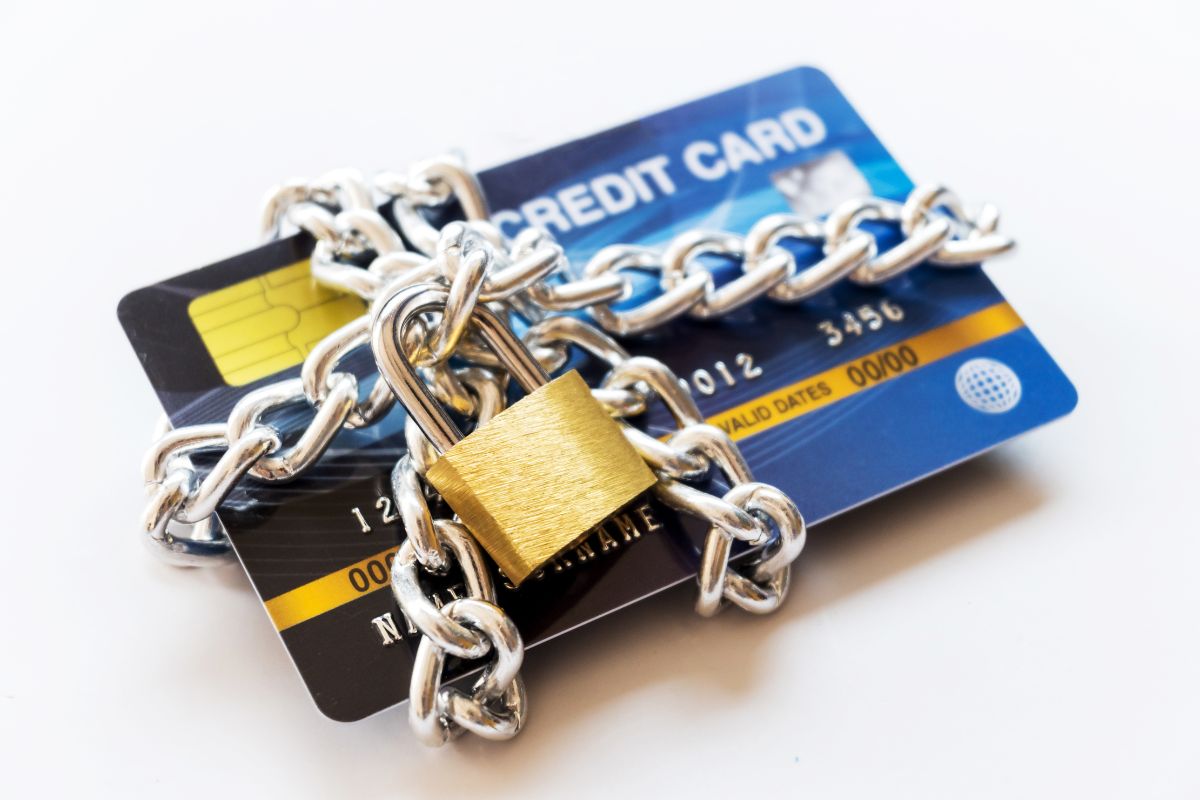Experts say keeping a good credit score is key to financial health. A score of 670 or higher can lead to better loan and credit card terms. It also affects your chances of getting a rental and your insurance costs. For 2024, it’s vital to use smart credit score improvement strategies.
Managing your debt well, paying bills on time, and keeping your credit use low can really help your score. Also, check your credit reports for mistakes and fix them to protect your score.
Key Takeaways
- Payment history counts for 35% of your FICO Score; always pay bills on time.
- Keep your credit use under 30% to help your score.
- Length of credit history is 15% of your score; don’t close old accounts.
- Handle your debt well to keep a good credit score.
- Fix any wrong info on your credit report to boost your score.
Put Holiday Windfalls Toward Debt

Using holiday bonuses or unexpected cash gifts to pay down debts is a smart move. The holiday season often brings extra money. If you use it right, you can make a big dent in your debt, especially high-interest credit card debt.
How to Use Windfalls Effectively
To use your windfalls wisely, focus on paying off debts with the highest interest rates first. These debts grow fast and cost you more money over time. By tackling high-interest credit card debt early, you avoid more financial trouble and save money for later.
- List all your debts with their interest rates.
- Prioritize payments towards credit card debt with the highest interest rates.
- Allocate any remaining windfall money towards creating an emergency fund.
- Consider putting part of the windfall into retirement savings or investment accounts.
Following these steps helps you use your windfalls well. You’ll pay down debt and secure your financial future.
Benefits of Reducing High-Interest Debts
There are many benefits to paying off high-interest debt. First, you save money that would have gone to interest. This is great for improving your financial health and reaching your goals.
- Reduced Interest Payments: Lowering your high-interest debts means you spend less on interest. This frees up money for other goals.
- Improved Credit Score: Paying down high-interest credit card debt boosts your credit score. It lowers your credit utilization ratio, which should be under 30%.
- Enhanced Financial Security: With less money going to interest, you have more for an emergency fund or investments. This adds security to your financial future.
- Psychological Relief: Reducing debt reduces stress and gives you peace of mind. You’ll feel in control of your finances.
So, using your financial windfalls to tackle high-interest debt is a great way to save money and improve your creditworthiness.
Set Up Automatic Bill Payments
Setting up automatic bill payments can boost your credit score by making sure you pay on time every month. Payment history is 35% of your FICO score, so automating payments is key to a good credit score.
Missing payments hurts your credit rating. Automatic payments for things like credit cards, utilities, and loans help you avoid missing payments. Overdraft protection can also help by preventing extra fees if you spend more than you have.
Having a good bill management system with autopay makes handling bills easy. For example, the Citi Simplicity® Card offers 0% intro APR for 12 months on purchases and 21 months on balance transfers. This makes it easier to stay on top of payments.
Autopay lets you schedule payments for the full balance, which is good if you can afford it. This can prevent extra interest from building up. Cards like the Chase Freedom Flex℠ card offer 15 months of 0% intro APR on new purchases and cashback, helping with budgeting.
It’s important to check your monthly statements for errors or unexpected fee changes. Keeping an eye on your accounts ensures your bill management system works well without any surprises.
Here’s a look at some features of popular credit cards that help with automated bill payments:
| Card | 0% Intro APR | Cash Back Benefits |
|---|---|---|
| Citi Simplicity® Card | 12 months on purchases, 21 months on balance transfers | N/A |
| Chase Freedom Flex℠ card | 15 months on new purchases |
|
By using automatic payments and keeping an eye on your statements, you can protect your credit score. This ensures a smooth bill management experience.
Pay Down Balances

Paying off credit card balances can really help boost your credit score. But, it’s best to do it in a smart way. Here’s how to pay down your balances effectively:
Prioritizing High-Interest Debts
It’s smart to pay off high-interest credit card debt first. These debts cost more over time than other loans. By focusing on these debts, you’ll pay less interest and have more money for other goals.
- Focus on high-interest credit card debt first
- Reduce overall interest payments
- Free up resources for other debts
Understanding Credit Utilization
The credit utilization ratio is a big part of your credit score. It’s the amount you owe on your cards compared to your limit. Keeping this ratio under 30% is good. If you keep it in single digits, your credit score will likely go up.
Paying down balances is a smart move for several reasons:
- Lower Credit Utilization Ratio: A lower rate shows you’re managing your credit well.
- Improved Credit Score: Lowering your utilization can really boost your score.
- Maintained Available Credit: Reducing balances while keeping accounts open helps keep your ratio positive.
| Factor | Impact on Credit Score |
|---|---|
| Maintaining a Utilization Rate Below 30% | Positive |
| Paying Off High-Interest Debts | Positive |
| Keeping Credit Cards Open | Positive |
| Closing Credit Accounts | Negative |
| Increasing Credit Limit | Temporary Dip |
Regularly paying off credit card balances boosts your credit score and protects against high-interest rates. It also helps your financial health in the long run. Always keep your credit utilization low and focus on high-interest debts to greatly improve your credit score.
Handle Debt in Collections
Managing debt in collections is key to boosting your credit score. Payment history makes up 35% of a FICO® Score and 40-41% of VantageScore® 3.0 and 4.0. It’s crucial to deal with collection accounts quickly. Negotiating with creditors or disputing errors can greatly improve your financial health.
Negotiating With Creditors
Dealing with debt in collections? Credit negotiation can help. About 35% of a FICO® Score comes from payment history. Settling or paying off collection accounts can lift your score. For example:
- FICO® Scores 9 and 10 ignore all paid collections and reduce the penalty for unpaid medical collections compared to non-medical collections.
- VantageScore® 3.0 and 4.0 disregard all paid collections and paid medical collections.
- Historically, collection accounts over $100 stay on your credit report for up to seven years, affecting older FICO scoring models like FICO® Score 8.
Settling collections can stop legal actions, wage garnishments, and boost your credit scores with new scoring models. But remember, paid collection accounts stay on your credit reports for seven years from the first missed payment.
Disputing Collection Errors
It’s vital to fix any mistakes in your collection accounts by filing disputes. Wrong info can damage your payment history and credit score. Since FICO® Scores 9 and 10, and VantageScore® 3.0 and 4.0, ignore paid collections, keeping your credit reports accurate is key.
Here’s how to dispute collection errors:
- Get your free credit report from AnnualCreditReport.com.
- Review each entry, focusing on collection accounts.
- Collect proof for your dispute, like payment records or creditor correspondence.
- Send the dispute to the credit bureaus and wait for their findings.
Fixing errors can lead to a fairer credit score. Keeping your credit in check, including handling debt in collections well, is crucial for a good credit score.
Get a Credit-Builder Loan
A credit-builder loan is a great way to improve your credit history. You can get it through credit unions. These loans help you build or fix your credit by making regular payments. Since payment history is a big part of your credit score, paying this loan on time can really help your score.
These loans usually range from $300 to $1,000 and last from six to 24 months. Before you get the loan, you’ll need to share some financial info with the lender. Unlike other loans, the money is kept in a savings account until you pay it back. This way, the lender knows the money is there if you don’t pay.
Getting a credit-builder loan from credit unions has another big plus: lower interest rates. These rates are often lower than what you’d find at banks. This can make it easier to pay back the loan and improve your credit score.
A typical credit-builder loan might look like this:
| Loan Amount | Repayment Period | Monthly Payment |
|---|---|---|
| $300 | 6 months | $50 |
| $500 | 12 months | $41.67 |
| $1,000 | 24 months | $41.67 |
Credit-builder loans do more than just improve your FICO score. They also show you can handle debt well. This can help your credit mix, which is a part of your credit score. So, this loan is a two-for-one deal for your credit health.
If you’re struggling with debt, you might find this interesting. High debt is a big issue for many Americans. By managing a credit-builder loan well, you can slowly pay down your debt. This can lower your credit utilization ratio, which is also part of your credit score.
These loans are open to many people, even those in low-income areas. There are over 1,400 Community Development Financial Institutions (CDFIs) in the U.S. that offer similar services. Also, groups like the Mission Asset Fund run interest-free loans that help improve your credit score.
In short, a credit-builder loan is a powerful tool for those without much credit or a bad credit history. It’s a step towards better financial health in the long run.
Seek Out a Secured Credit Card

Secured credit cards are great for people wanting to improve their credit. They’re perfect if you have bad credit, a short credit history, or negative marks. A secured credit card can help you get your credit back on track.
How Secured Credit Cards Work
Secured credit cards need a cash deposit, which is usually the same as your credit limit. For example, the Discover it® Secured Credit Card requires a deposit between $200 and $2,500. This deposit is like insurance for the card company, letting you charge up to your limit.
How you use the card and pay your bills is key to building credit. Try to use less than 30% of your credit and pay off your balance every month. This shows you’re responsible with credit. Payment history is a big part of your credit score, so paying on time is crucial.
The Capital One Platinum Secured Credit Card is easy to get, sometimes with a deposit as low as $49. Secured cards usually have small credit limits and higher interest rates. But, if you use them wisely, you can quickly improve your credit score, often in less than six months.
Transitioning to an Unsecured Card
Once you show you can handle credit well, you might get an unsecured card. Some companies, like Discover, might even upgrade you automatically if you pay on time and keep your balances low.
Sometimes, you’ll need to close your secured card to get your deposit back and apply for an unsecured card separately. It’s best to wait at least six months with good credit habits before making this move.
Checking your credit score regularly with tools from banks and credit card companies can track your progress. This helps you see how you’re doing and gives advice to get better. By doing this, you can smoothly move from a secured to an unsecured credit card, improving your financial health.
Comparison of Popular Secured Credit Cards
| Card Name | Minimum Deposit | Credit Line | Interest Rate |
|---|---|---|---|
| Capital One Platinum Secured Card | $49-$200 | Equal to Deposit | Variable 26.99% |
| Discover it® Secured Credit Card | $200-$2,500 | Equal to Deposit | Variable 24.49% |
Join an Account as an Authorized User
Becoming an *authorized user* on someone else’s *credit card account* can boost your *credit report*. It’s great for those starting or rebuilding their credit. Being added to an account with good payment history can quickly improve your credit score.
Payment history is key, making up 35% of the FICO® Score. As an authorized user, your credit report will show the good payment history of the account. This can greatly improve your credit profile. Also, the *credit utilization* rate, which is 30% of the FICO® Score, can get better. Joining an account with a high credit limit can lower your *credit utilization* ratio, helping your credit score.
Here are the main benefits for authorized users:
- Credit Utilization: Sharing a high credit limit lowers your credit utilization rate, which helps your credit score.
- Payment History: These accounts often have a long history, helping to build or improve your payment history.
- No Negative Information: Agencies like Experian don’t report negative info, like late payments, from the primary user’s account on your *credit report*.
- Credit Age: Being an authorized user keeps older accounts active, which is good for your credit score.
But, being an authorized user isn’t without risks. If the main cardholder pays late or uses too much credit, it can hurt your score. Make sure the main user manages their credit well before adding you to their *credit card account*.
Adding an authorized user can quickly change credit scores if the credit card company reports it to credit bureaus. Parents often do this to help their kids start building credit. Since credit utilization and payment history are big factors, being an authorized user can really help your credit score.
Here’s a summary of the benefits of being an authorized user:
| Benefits | Impact on Credit Score |
|---|---|
| Improved Credit Utilization | Positive |
| Established Payment History | Positive |
| Credit Age Retention | Positive |
| Immediate Access to Credit | Positive |
| Possible Negative Impact if Primary User Misuses Credit | Negative |
Being an authorized user is a good way to improve your *credit report*, if you choose the right account and are careful. This method can greatly help your credit by improving payment history, lowering credit utilization, and keeping credit age long—all important for a good credit score.
Dispute Credit Report Inaccuracies
It’s crucial to ask for your free credit report from Experian, TransUnion, and Equifax often. This helps you spot credit report errors early and keeps your credit info right. Knowing how to fix mistakes is vital for a good credit score.
Requesting Your Free Credit Report
The credit bureaus let you check your credit report for free once a week. You can get six free credit reports a year through 2026 by visiting the Equifax website or calling 1-866-349-5191. Checking often helps you find identity theft or unauthorized accounts fast.
| Credit Bureau | Free Reports Frequency |
|---|---|
| Experian | Once a week |
| TransUnion | Once a week |
| Equifax | Six per year through 2026 |
Look over these reports carefully. Mistakes on your credit report can hurt your finances. Check for wrong personal info, wrong payment reports, or accounts that don’t belong to you.
Steps to Dispute Errors
To fix credit report errors, follow these steps to dispute them. Start by filing a dispute with the credit bureau that made the mistake. They must look into it within 30 days and send documents to the data furnishers.
- Gather Evidence: Collect documents like statements or receipts that prove your claim.
- Submit a Dispute Letter: Write a formal dispute letter with the documents. Send it to the credit bureau and the data furnisher.
- Maintain Records: Keep all dispute letters and documents. This is important if the dispute is seen as frivolous.
- Monitor Updates: The credit bureaus will tell you about your dispute’s progress and outcome. Data furnishers must also tell all credit reporting companies about any changes.
- Follow Up: Check your updated credit reports for the fixes. If problems stay, you can complain to the Consumer Financial Protection Bureau (CFPB) for help.
Being careful in fixing credit report mistakes can greatly improve your credit score. This careful approach makes sure your financial history is right. It opens up better chances for loans and credit.
Using Experian Boost for Credit Score Improvement
Experian Boost is a tool that helps you boost your FICO® Score by adding your on-time payments to your credit report. It’s free and great for those with little credit or scores that are fair to poor. Here’s how it works:
- Experian Boost looks at your on-time payments from bills like mobile and landline phones, rent, utilities, and streaming services. This can increase your FICO® Score.
- You can add up to two years of payment history for each bill to your credit report. Only on-time payments help increase your score.
- Late payments are not counted, and you can see your FICO® Score go up right away if you meet the criteria.
Adding bills to your credit report can raise your FICO® Score by about 13 points on average. The service keeps your data safe with bank-level SSL security encryption.
Let’s dive into some key points and stats to see how Experian Boost affects users and their financial habits:
| Statistic | Detail |
|---|---|
| Average FICO® Score Increase | 13 points |
| Eligible Payments | Utilities, telecom, rent, streaming services, insurance (excluding health) |
| Qualification Period | At least 3 payments in the past 6 months, including 1 payment in the past 3 months |
| Immediate Impact | FICO® Score increase verified upon successful addition of payments |
| Data Security | Bank-level SSL security encryption |
| Cost | Free of charge |
In summary, Experian Boost makes it easy to improve your credit report by rewarding good financial habits. This can lead to better loan and credit card approval rates, more financial offers, and savings overall.
Keep Old Accounts Open

Keeping old credit card accounts open is a smart move for your credit score. It helps keep your credit history long and manages your credit use well. This is true even if you don’t use the accounts often.
Benefits of Long Credit History
A long credit history is key to a high credit score. Payment history and credit account age make up 50% of your score. So, keeping old accounts open is good for you.
It shows you’re stable and reliable to lenders. This can lead to better loan terms and lower interest rates.
Here are more reasons to keep a long credit history:
- Stronger credit application profile
- Better chances of loan approvals
- Potentially lower insurance premiums
Managing Inactive Accounts
Even inactive accounts can help keep your credit use ratio healthy. Closing an old account lowers your credit limit and can raise your use ratio. This ratio should stay under 30%. A higher ratio can hurt your credit score.
If old accounts cost too much, consider these options:
- Request an account downgrade to avoid annual fees.
- Switch to a no-fee card while keeping the credit line active.
Here’s why keeping old accounts open is good:
| Scenario | Total Credit Limit | Credit Utilization | Credit Score Impact |
|---|---|---|---|
| With Old Accounts | $10,000 | 25% | Positive |
| Without Old Accounts | $5,000 | 50% | Negative |
As shown, keeping old accounts open helps with a good credit use ratio and boosts your credit score. Manage your inactive accounts well for a strong credit history and better financial health.
Conclusion
Taking steps to improve your credit score is key for your financial health. By focusing on good credit repair and financial habits, you can boost your credit score goals. Managing and reducing debt helps a lot, making up 35% of your FICO Score.
Keeping your credit use low, in the single digits, also affects your score a lot, making up 30% of it. Setting up automatic payments and paying off high-interest debts first can really help. Handling debts in collections right is also important, as they can affect your score for up to seven years.
Tools like Experian Boost and credit-builder loans can help improve your credit too. Becoming an authorized user or using new secured credit cards wisely can also help. Keeping old accounts open can also be beneficial, as a longer credit history is good for your score.
Checking your credit regularly and using these tips will help you get a stable and better financial future. This way, you can reach your credit score goals by 2024 and beyond.










